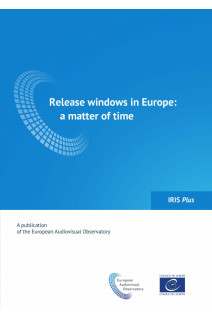This report clarifies the current release windows situation in Europe by providing a thorough analysis of the system and the economic and legal rationale on which it is based.
When we talk about release (or exploitation) windows, we are talking about a business model whereby cinematographic films are exploited in different markets (cinema theatres, VOD, Pay TV, and free TV) at different times in order to maximise profits by avoiding competition between those markets.
Executive summary 1. Setting the scene 1.1. Definition and brief history
1.1.1. What windows are and how they work
1.1.2. The history and evolution of windows
1.2. The economic rationale for film exploitation windows
1.3. Discussing the economic rationale of windows
1.4. The multiplication of windows
1.5. How does regulation impact windows? A limited sample analysis of TVOD
2. European framework 2.1. Audiovisual Media Services Directive
2.2. Competition law
3. National overview on release windows 3.1. A diversity of approaches to organise release windows in the European Union
3.2. Specific legislative provisions on release windows
3.2.1. BG - Bulgaria
3.2.2. FR -France
3.3. Rules regarding film support related to release windows
3.3.1. AT - Austria
3.3.2. DE - Germany
3.3.3. IE - Ireland
3.3.4. IT - Italy
3.3.5. NL - The Netherlands
3.3.6. SE - Sweden
4. National self-regulatory approaches 4.1. Industry agreements
4.1.1. BE - Belgium
4.1.2. DK - Denmark
4.1.3. ES - Spain
4.2. Free contracts: the example of the United Kingdom
5. Case law 5.1. European Union
5.1.1. CJEU
5.1.2. Decisions of the European Commission
6. State of play 6.1. The theatrical window, fundamental or obsolete?
6.1.1. Fight or adapt?
6.1.2. Film festivals as battlegrounds?
6.1.3. SVOD’s audience-based strategy
6.2. Exploitation windows and the promotion of audiovisual works
6.3. Take-aways from the EAO Presidency Conference
7. Annexe – Survey of chronology trends in EU member states (August 2019)




